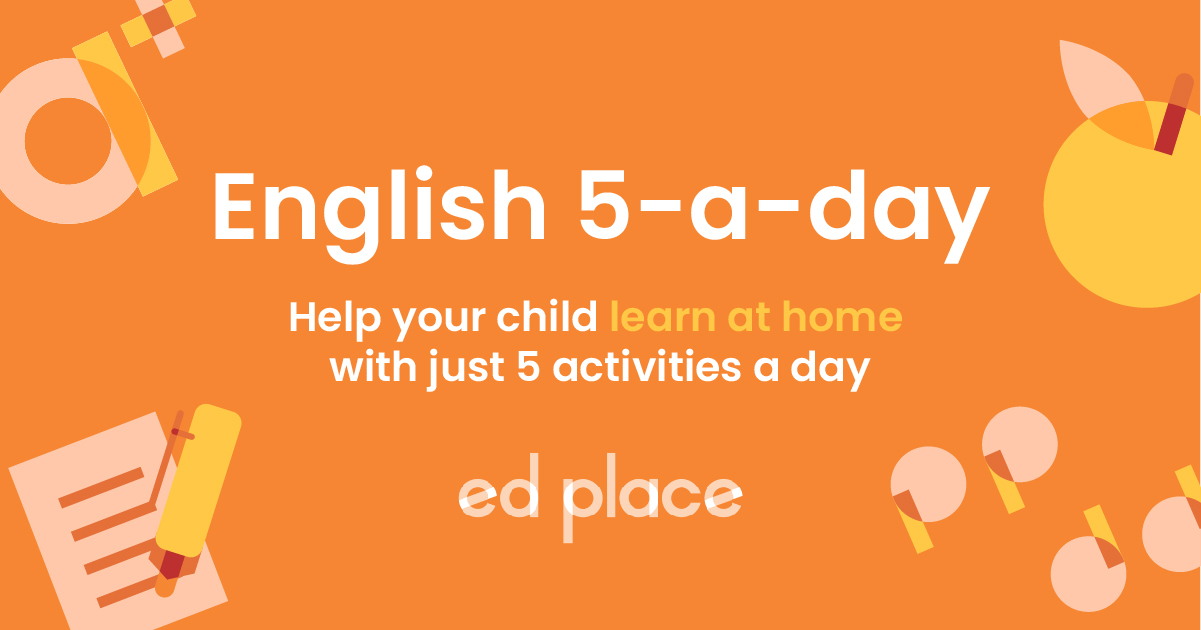
EdPlace's Year 7 Home Learning English Lesson: Effect of Language in a Text
Looking for short lessons to keep your child engaged and learning? Our experienced team of teachers have created English, maths and science lessons for the home, so your child can learn no matter where they are. And, as all activities are self-marked, you really can encourage your child to be an independent learner.
Get them started on the lesson below and then jump into our teacher-created activities to practice what they've learnt. We've recommended five to ensure they feel secure in their knowledge - 5-a-day helps keeps the learning loss at bay (or so we think!).
Are they keen to start practising straight away? Head to the bottom of the page to find the activities.
Now...onto the lesson!
Explaining the Effect of Language in a Text
Explaining the effect of language in a text is a great way to demonstrate the highest level of understanding. It also really develops and extends an answer, showing that your child has engaged with the language deeply enough to be able to demonstrate this elusive reading skill.
When explaining the effect of language, children are often asked; what is the effect of this word? Or, how does this sentence make you, the reader, feel? Quite often, this can generate a simple or vague response such as; ‘it makes me want to read on’ or ‘it creates an image in the reader's mind’. These are general answers which could really be applied to any piece of writing, so how do we encourage children to be more specific in their answers?
We're sure that if you follow this article through, your child will be able to:
1) Understand the text.
2) Identify the language effects used by the writer.
3) Expand their answer to describe how and why the language works, if they've really cracked it!
Step 1 - Technical Terminology!
Before we begin to explain the effect of language, it’s important to check that your child understands what the key terminology means. Identifying language features shows an understanding of how something is written. Here are three that you may notice whilst reading:
Personification = A comparison where something non-human is given human characteristics e.g. the sun smiled down on them.
Metaphor = A comparison where one thing is described in terms of something else e.g. his home was his castle.
Onomatopoeia = A word that makes the sound of the thing it describes e.g. he cracked his whip.
Step 2 - Focus on specific parts of an article
Before asking your child to explain the effect of language, it is important for them to identify which parts of an extract to focus on. The following paragraph and question demonstrate how to find the figurative language.
The silvery moon smiled down on the village that night. The wind, for once, ceased its whistling and retired to the distant mountains.
Question: How would you describe the atmosphere of the village?
Answer: The writer uses personification to describe how the moon “smiled down on the village”.
Step 3 - Explaining effect of language
Once your child has identified the language technique, they can then begin to expand their answer by providing an explanation of the effect of this language.
If we look at this answer again, we can see how much more detailed and clear it becomes when we explain the intended effect of the technique.
Answer: The writer uses personification to describe how the moon “smiled down on the village”. This creates the effect that the moon is a caring, living thing that is watching over the village with kindness.
Step 4 - Practice makes perfect
Why not have a go at explaining the effect of the language in the second sentence of this extract?
The silvery moon smiled down on the village that night. The wind, for once, ceased its whistling and retired to the distant mountains.
Suggested Answers:
The writer uses personification to describe how the wind “retired to the distant mountains”. This creates the effect that the village is very peaceful, with the wind seeming tired or sleepy and giving the village no trouble that night.
Step 5 - How About Testing Your Understanding?
We hope your child is feeling more confident with punctuating direct speech! If so, now is the perfect time for you to put them to the test. Here are some activities which will help to consolidate their learning. We recommend doing them in this order so that the learning builds progressively.
All activities are created by teachers and automatically marked. Plus, with an EdPlace subscription, we can automatically progress your child at a level that's right for them. Sending you progress reports along the way so you can track and measure progress, together - brilliant!
Activity 1 - Speech Marks: How to Use Them
Activity 2 - Understand Word Meaning: Using Context Clues
Activity 3 - Revise Terminology Used in English
Activity 4 - Revise Common Figures of Speech
Activity 5 - Reading Fiction: The Hobbit (the Dragon Attacks)
Keep going! Looking for more activities, different subjects or year groups?
Click the button below to view the EdPlace English, maths, science and 11+ activity library








